
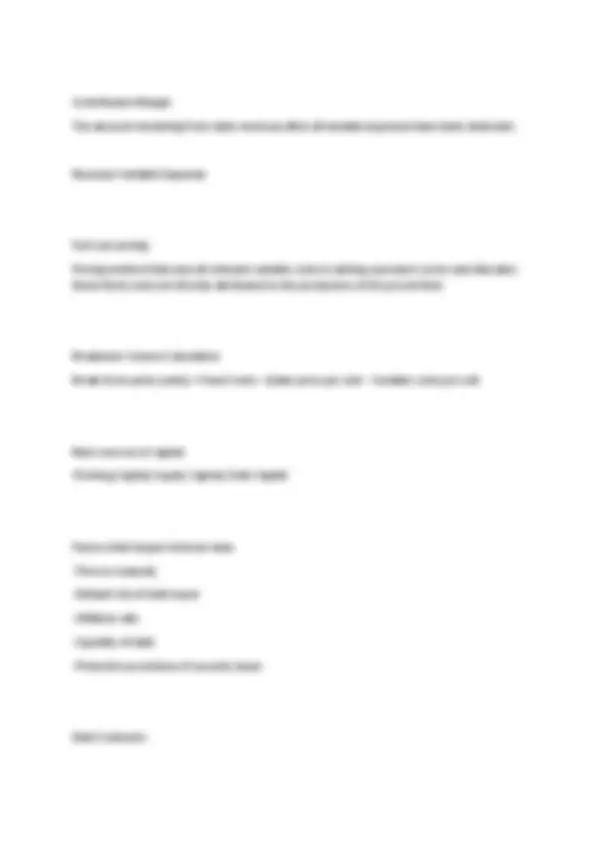
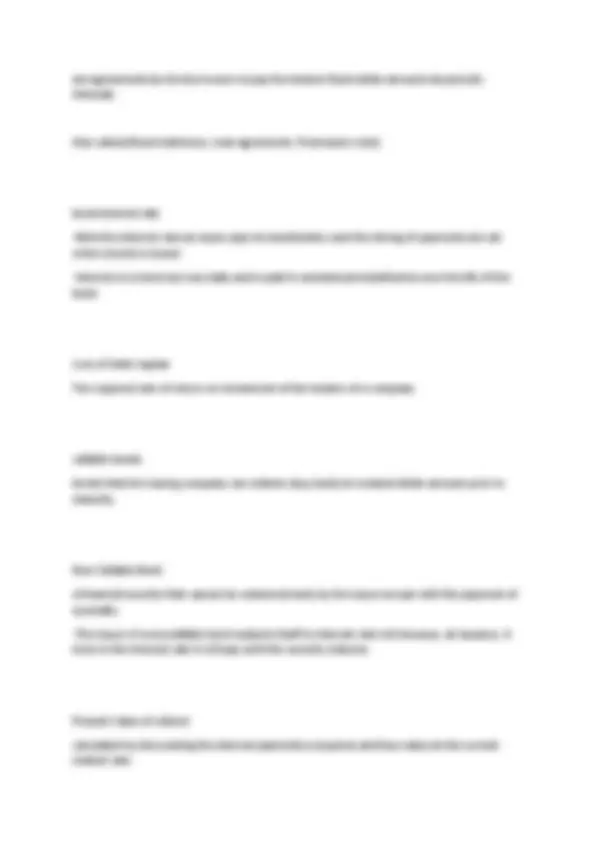
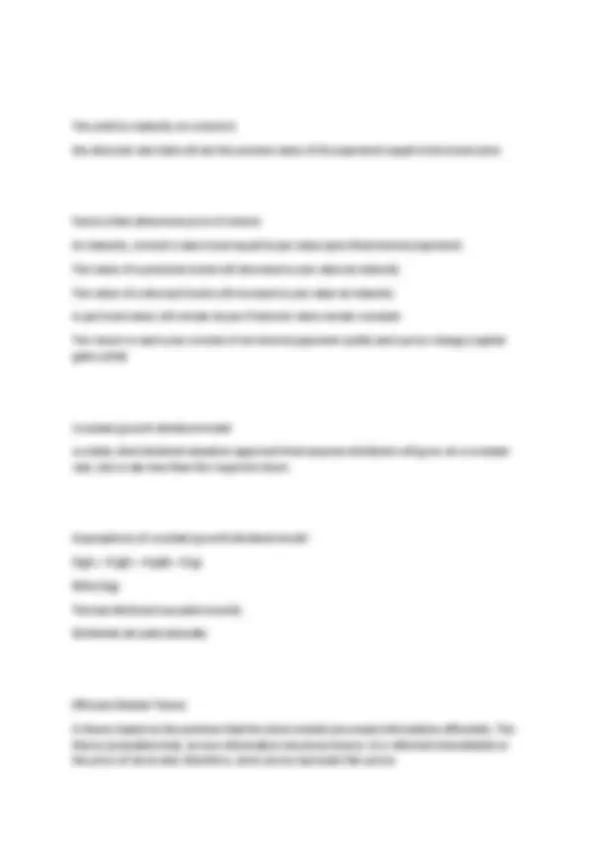
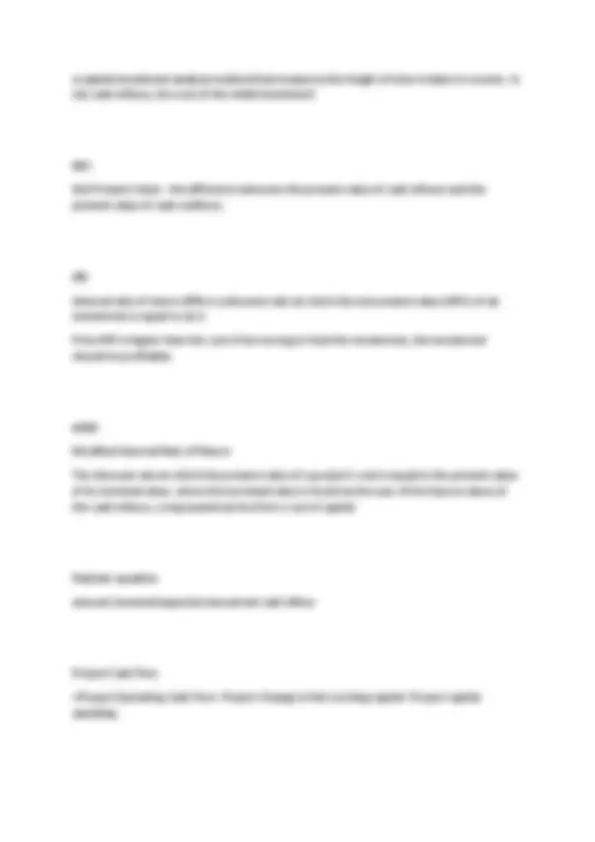
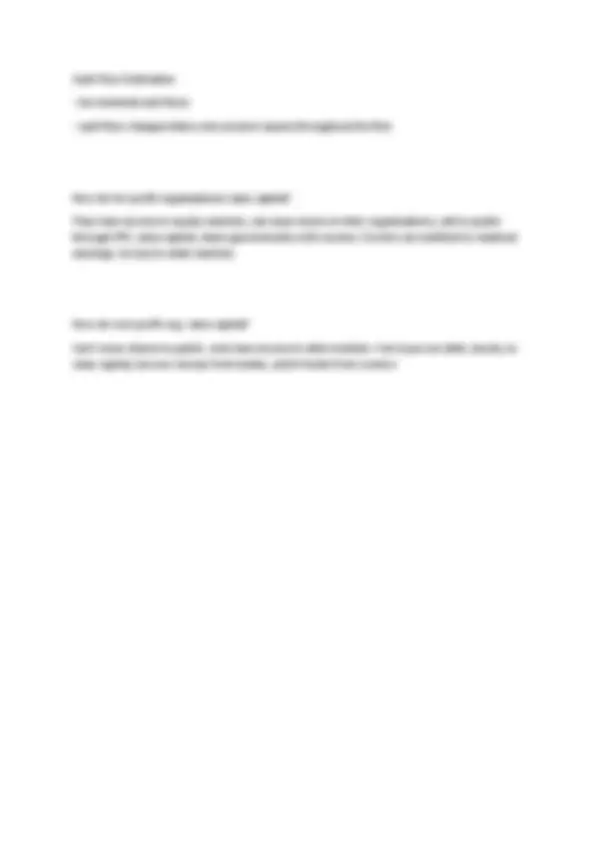


Study with the several resources on Docsity

Earn points by helping other students or get them with a premium plan


Prepare for your exams
Study with the several resources on Docsity

Earn points to download
Earn points by helping other students or get them with a premium plan
Community
Ask the community for help and clear up your study doubts
Discover the best universities in your country according to Docsity users
Free resources
Download our free guides on studying techniques, anxiety management strategies, and thesis advice from Docsity tutors
An overview of key concepts in healthcare finance, including direct and indirect costs, cost allocation methods, cost drivers, variable costs, contribution margin, full-cost pricing, breakeven analysis, sources of capital, debt contracts, bond pricing, dividend valuation models, efficient market theory, budgeting approaches, and capital investment analysis techniques such as payback, npv, and irr. A wide range of topics relevant to healthcare management and finance, making it a potentially useful resource for students and professionals in these fields. The level of detail and technical nature of the content suggest it could be most appropriate for university-level study or as reference material for healthcare finance courses, rather than for high school students or general audiences.
Typology: Exams
1 / 9

This page cannot be seen from the preview
Don't miss anything!






Direct Costs Costs unique and exclusive to a department. GENERATE REVENUE Ex- costs associated with providing the clinical testing such as staff and supplies. Indirect costs (overheads) Costs associated with shared resources used by the entire organization Ex-costs associated with central services such as human resources and finance Cost Allocation Assign all overhead costs to the departments that create the need for such costs, typically the patient services departments. Cost Pool Overhead amount to be allocated. Consists of the direct costs of one overhead department. Ex- HR Cost cost driver Basis on which the cost pool will be allocated. Ex- the cost driver for facilities overhead (building space depreciation, maintenance, utilities, and so on) might be the amount of space used by each department that uses the organization's facilities.
Cost Allocation Rate dividing # of dollars in cash pool/total volume of cost driver What makes a good cost driver? Perceived as being fair and promote organizational cost reduction. Assume that the cost driver for Housekeeping Services is the amount of space occupied. User departments in total occupy 200,000 square feet of space. Direct cost allocation method the costs of each support department are allocated directly to, and only to, the patient services departments. Step-down allocation method allocates support-department costs to other support departments and to operating departments in a sequential manner that partially recognizes the mutual services provided among all support departments What is the most used Cost Allocation Method? Step-down method is used more because it recognizes at least some of those interest support department relationships. So, it's a fairer in efficient way of doing the allocation. Reciprocal allocation method allocates support-department costs to operating departments by fully recognizing the mutual services provided among all support departments variable costs costs that vary directly with the level of production. Examples of variable expenses utility bill, groceries, gasoline, phone bill
are agreements by the borrowers to pay the lenders fixed dollar amounts at periodic intervals. Also called (Bond indenture, Loan agreement, Promissory note) bond interest rate
The yield to maturity on a bond is the discount rate that will set the present value of the payments equal to the bond price Factors that determine price of a bond At maturity, a bond's value must equal its par value (plus final interest payment) The value of a premium bond will decrease to par value at maturity The value of a discount bond will increase to par value at maturity A par bond value will remain at par if interest rates remain constant The return in each year consists of an interest payment (yield) and a price change (capital gains yield) Constant growth dividend model a widely cited dividend valuation approach that assumes dividends will grow at a constant rate, but a rate less than the required return Assumptions of constant growth dividend model E(g1) = E(g2) = E(gN) = E(g) R(Re) E(g) The last dividend was paid recently Dividends are paid annually. Efficient Market Theory A theory based on the premise that the stock market processes information efficiently. The theory postulates that, as new information becomes known, it is reflected immediately in the price of stock and, therefore, stock prices represent fair prices.
total budget variance the difference between the actual cost of an input and its planned cost. Volume Budget Variance difference between the total budgeted overhead costs and the actual amount of overhead costs allocated to production processes Revenue budget variance difference between actual revenues and static budget revenues, and has two components : sales price variance and revenue sales quantity variance budget variances Differences between actual results and sales budget expectations Profit variance equation subtract your projected gross profit from your actual gross profit steps in a capital investment financial analysis
a capital investment analysis method that measures the length of time it takes to recover, in net cash inflows, the cost of the initial investment NPV Net Present Value - the difference between the present value of cash inflows and the present value of cash outflows. IRR Internal rate of return (IRR) is a discount rate at which the net present value (NPV) of an investment is equal to zero. If the IRR is higher than the cost of borrowing to fund the investment, the investment should be profitable. MIRR Modified Internal Rate of Return The discount rate at which the present value of a project's cost is equal to the present value of its terminal value, where the terminal value is found as the sum of the future values of the cash inflows, compounded at the firm's cost of capital. Payback equation amount invested/expected annual net cash inflow Project Cash Flow =Project Operating Cash Flow- Project Change in Net working capital - Project capital spending